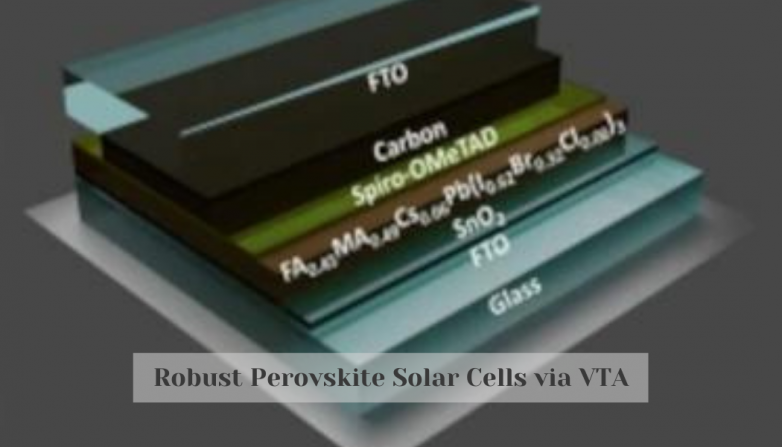Robust Perovskite Solar Cells via VTA
Jul 10, 2023 12:56 PM ET
- Researchers in Thailand have developed a triple-cation perovskite solar cell for low-light applications with improved efficiency of up to 32%. VTA leads to dense, hard morphology and suppressed trap states, and could be adapted for various optoelectronic applications. Learn more in this article.

Researchers from Thailand have developed a triple-cation perovskite solar cell for low-light applications which uses antisolvent deposition and vacuum thermal annealing (VTA). VTA leads to dense, hard morphology and suppressed trap states, which are key factors for higher efficiency. When tested at 1000 lux, the efficiency of the VTA-based cell was 27.7%, with peak efficiency reaching 32.0%. The reference cell without VTA reached 25.5% efficiency, with peak efficiency at 30.7%. This development opens the door for robust perovskite formation and could be adapted for various optoelectronic applications.
What Is VTA Perovskite Cell Efficiency?
- VTA stands for vacuum thermal annealing and is a key factor for higher efficiency in a triple-cation perovskite solar cell
- When tested at 1000 lux, the VTA-based cell had 27.7% efficiency and a peak efficiency of 32.0%, while the cell without VTA had 25.5% efficiency and a peak efficiency of 30.7%.
- This development has opened the door for robust perovskite formation and could be used in various optoelectronic applications.
- The VTA-based cell had better stability when exposed to damp heat and UV irradiation.
- The antisolvent deposition used in the VTA-based cell also improved the cell’s performance under low-light conditions.
Also read
- Revolutionizing Solar Energy: Key to Efficient Organic Cells
- Revolutionary Solar Cells Power Drone with Unprecedented Efficiency
- Unlocking Perovskite Secrets: Next-Gen Solar Cell Breakthrough
- Ultra-lightweight Perovskite Solar Cells Power Energy-Autonomous Drones
- Revolutionary CFS Technique for Rapid Perovskite Solar Cells
SOLAR DIRECTORY
Solar Installers, Manufacturers
